Table of Contents
- What is Stick Welding
- How Stick Welding Works
- Advantages of Stick Welding
- Applications of Stick Welding
- Safety Measures in Stick Welding
- Techniques and Tips for Effective Stick Welding
- Training and Skill Development in Stick Welding
- Environmental Impact of Stick Welding
- Future Trends in Stick Welding
- Conclusion
- FAQs:
Welcome to stick welding, a foundational technique in metal joining. From its historical roots to its modern-day applications, stick welding offers a blend of simplicity and versatility that transcends industries. Let’s delve deeper into this fundamental welding process, uncovering its mechanics, advantages, limitations, and much more. Buckle up for an illuminating journey through the intricacies of stick welding!
What is Stick Welding
Stick welding, also known as Shielded Metal Arc Welding (SMAW), is one of the earliest and most fundamental welding processes. Its origins trace back to the early 20th century, gaining prominence due to its simplicity, adaptability, and effectiveness in joining metal components.
Historical Background
The inception of stick welding revolutionized metalworking industries by introducing a practical method for fusing metals. With the invention of the coated electrode by Oscar Kjellberg in 1907, welding transformed into a more efficient and accessible process.
Importance in Modern Industries
Stick welding maintains its significance across various sectors despite the advent of newer technologies. Its ability to operate in diverse conditions, including outdoor environments and challenging situations, makes it indispensable in construction, infrastructure development, manufacturing, and household repairs.
How Stick Welding Works
Stick welding, called Shielded Metal Arc Welding (SMAW), operates on a straightforward yet effective principle. It involves using a consumable electrode coated in flux, an electric current, and a welded workpiece.
Equipment Required for Stick Welding
- Power Source: Stick welding typically utilizes either direct current (DC) or alternating current (AC) power sources. DC is more commonly preferred due to its better welding characteristics.
- Electrodes: These electrodes come in various types and compositions, each suited for specific metals and welding requirements. They consist of a metal core and a flux coating that shields the weld pool from atmospheric contamination.
Process Explanation
- Arc Formation: When an electrode is struck against the workpiece, an electric arc forms between them, generating intense heat.
- Melting Metal: The heat produced by the arc melts the metal being welded and the electrode, creating a molten metal pool.
- Fusion: As the molten metal cools, it solidifies and fuses the workpieces, forming a solid and durable bond.
Key Elements of Stick Welding
- Electrode Coating: The flux coating on the electrode plays a vital role in shielding the molten weld pool from atmospheric gases and contaminants, ensuring a clean and strong weld.
- Arc Stability: Maintaining a stable arc is crucial for achieving high-quality welds. Proper electrode angle, distance from the workpiece, and consistent movement are essential factors.
- Deposition Rate: Stick welding typically has a lower deposition rate than other welding methods, which can affect the speed of completing a weld.
Advantages of Stick Welding
Despite its simplicity and traditional approach, stick welding offers several distinct advantages contributing to its continued relevance in welding practices.
Versatility in Various Environments
One of the standout features of stick welding is its adaptability to diverse working conditions. Unlike other welding methods requiring controlled environments, stick welding can be performed outdoors, in windy conditions, and even underwater with the right equipment. This versatility makes it an invaluable tool in industries where environmental factors pose challenges.
Cost-Effectiveness Compared to Other Methods
Stick welding is relatively cost-effective, requiring minimal equipment and setup compared to more sophisticated welding processes. The electrodes used in stick welding are generally affordable and readily available, contributing to its cost efficiency, particularly for small-scale or on-site welding jobs.
Ability to Weld Thick Materials
Another advantage of stick welding is its ability to weld thicker materials effectively. This makes it particularly useful in heavy industries like construction, shipbuilding, and infrastructure development, where welding thicker metals is a common requirement.
Adaptability and Reliability
The adaptability of stick welding extends beyond environmental factors. It can weld various metals, including steel, stainless steel, cast iron, and certain non-ferrous materials. This adaptability and reliability in producing solid and durable welds reinforce its utility across diverse applications.
Applications of Stick Welding
Stick welding’s adaptability and reliability render it a versatile method for various industries and applications.
Industrial Uses
- Construction: Stick welding finds extensive use in construction projects, from welding steel beams and structures to reinforcing metal frameworks.
- Shipbuilding: Its ability to handle thicker materials makes stick welding suitable for joining steel plates in ship hulls and maritime structures.
- Pipeline Welding: In the oil and gas industry, stick welding is crucial in welding pipelines, ensuring structural integrity and leak-proof joints.
Household Applications
- Repairs and Maintenance: Stick welding is a handy tool for household repairs involving metal components, including fences, gates, and garden equipment.
- Automotive Repairs: In automotive workshops, stick welding aids in fixing metal parts, exhaust systems, and chassis repairs.
Construction and Infrastructure
- Bridge Construction: Stick welding is often utilized in the construction and maintenance of bridges, reinforcing structural elements for safety and durability.
- Building Renovations: Renovation projects often rely on stick welding for repairing or joining metal elements within buildings.
Safety Measures in Stick Welding
Safety is paramount in any welding process, and stick welding is no exception. Adhering to proper safety measures minimizes risks and promotes a secure working environment.
Protective Gear Required
- Welding Helmet: Shields the face and eyes from intense light, sparks, and harmful UV radiation emitted during welding.
- Protective Clothing: Wear flame-resistant clothing, including a welding jacket, gloves, and pants, to shield against potential burns and sparks.
- Respiratory Protection: Employ respiratory equipment, like a welding respirator, to prevent inhalation of fumes and gases produced during welding.
Precautions to Avoid Hazards
- Ventilation: Ensure proper ventilation in the workspace to disperse welding fumes and maintain air quality.
- Electrical Safety: Inspect welding equipment regularly for any damaged cables or faulty connections to prevent electrical hazards.
- Fire Prevention: Keep fire extinguishing equipment nearby and maintain a clean, clutter-free workspace to prevent fires caused by sparks.
Eye and Skin Protection
- Eye Protection: Use welding goggles or a face shield with appropriate shading to shield the eyes from arc radiation and flying debris.
- Skin Protection: Cover exposed skin to avoid burns and protect against UV radiation emitted during welding.
Techniques and Tips for Effective Stick Welding
Mastering stick welding requires understanding the equipment and process and consistently employing specific techniques and tips to achieve high-quality welds.
Proper Electrode Selection
- Consider Material Type: Different electrodes are designed for specific materials. Select electrodes compatible with the welded metal, such as mild steel, stainless steel, or cast iron.
- Electrode Size and Amperage: Choose the appropriate electrode size and amperage settings based on the thickness of the material and welding requirements.
Correct Positioning and Movement
- Electrode Angle: Maintain the correct angle between the electrode and the workpiece, usually around 15-20 degrees, to ensure proper arc stability and penetration.
- Steady Travel Speed: Maintain a consistent travel speed to achieve uniform weld beads without creating gaps or irregularities.
Controlling Welding Technique
- Arc Length: Maintain a consistent arc length between the electrode and the workpiece for optimal heat control and weld penetration.
- Overlap and Weaving: Employ weaving or overlapping techniques to ensure complete coverage and fusion between weld passes, especially for thicker materials.
Post-Weld Inspection
- Visual Inspection: After welding, inspect the weld for any cracks, porosity, or irregularities that might compromise its integrity.
- Grinding and Finishing: Use appropriate tools to grind and finish the weld surface to remove imperfections and create a smooth, uniform appearance.
Continuous Practice and Improvement
- Practice Welding Positions: Practice welding in various positions—flat, vertical, horizontal, and overhead—to enhance proficiency and versatility.
- Seek Guidance and Feedback: Continuously seek guidance from experienced welders and seek feedback to improve welding techniques and address shortcomings.
Training and Skill Development in Stick Welding
Stick welding proficiency requires theoretical knowledge and practical skills acquired through structured training and continuous development.
Importance of Proper Training
- Fundamentals and Theory: Training programs cover the basics of stick welding, including understanding the equipment, electrode selection, and welding techniques.
- Hands-on Practice: Practical training sessions provide hands-on experience, allowing individuals to familiarize themselves with the welding process and equipment.
Resources for Learning Stick Welding
- Vocational Schools and Training Centers: Many vocational schools and specialized training centres offer comprehensive stick welding courses conducted by experienced instructors.
- Apprenticeships and On-the-Job Training: Apprenticeships or on-the-job training programs provide practical exposure under the guidance of experienced welders, facilitating skill development.
Continuous Learning and Improvement
- Workshops and Seminars: Attend workshops and seminars conducted by industry experts to stay updated on the latest welding techniques, equipment, and safety protocols.
- Online Resources and Tutorials: Access online resources, video tutorials, and educational materials to supplement learning and enhance understanding of stick welding principles.
Certifications and Qualifications
- Certification Programs: Obtain certifications such as AWS (American Welding Society) certification or other relevant qualifications to validate proficiency in stick welding.
- Skill Enhancement Programs: Participate in skill enhancement programs or assessments to continually refine and validate welding skills.
Environmental Impact of Stick Welding
While stick welding is a versatile and widely used welding method, it’s essential to consider its environmental implications and strive for more sustainable welding practices.
Energy Consumption and Emissions
- Power Consumption: Stick welding typically requires high electrical power, contributing to increased energy consumption during welding operations.
- Emission of Fumes: The welding process generates fumes and gases, including ozone, nitrogen oxides, and particulate matter, which can adversely affect air quality.
Environmental Concerns
- Air Pollution: Welding fumes and gases released during stick welding contribute to air pollution, posing health risks to welders and those near the welding area.
- Waste Generation: Consumable electrodes and leftover flux coatings contribute to waste generation, necessitating proper disposal measures.
Mitigation Measures
- Ventilation Systems: Implement effective ventilation systems in welding areas to minimize the concentration of welding fumes and gases, improving air quality.
- Use of Low-Emission Electrodes: Employ low-hydrogen or low-emission electrodes that generate fewer fumes and gases during welding.
Eco-Friendly Practices
- Recycling and Waste Management: Encourage recycling of consumable materials and proper waste management practices to reduce the environmental impact of discarded welding materials.
- Alternative Welding Methods: Explore alternative welding methods, such as gas metal arc welding (GMAW) or gas tungsten arc welding (GTAW), which produce fewer emissions and require less power consumption.
Future Trends in Stick Welding
As technology advances, the field of stick welding undergoes constant innovation and evolution, paving the way for future developments and improvements.
Advancements in Welding Technology
- Automated Stick Welding Systems: Integrating automation and robotics in stick welding processes is anticipated to enhance precision and efficiency, reducing human intervention and increasing productivity.
- Improved Electrode Design: Ongoing research focuses on developing electrodes with enhanced properties, such as better arc stability, reduced spatter, and improved penetration, leading to higher-quality welds.
Impact of Innovation on Stick Welding
- Enhanced User-Friendly Interfaces: Future welding equipment may feature intuitive interfaces and controls, simplifying operation and allowing welders of varying skill levels to achieve better results.
- Energy-Efficient Equipment: Efforts are directed toward developing stick welding equipment that consumes less power without compromising welding performance, contributing to energy conservation.
Environmental Considerations and Sustainability
- Low-Emission Electrodes: Continued research aims to produce electrodes that emit fewer fumes and gases, addressing environmental concerns associated with stick welding.
- Focus on Eco-Friendly Practices: The industry will likely embrace more sustainable approaches, emphasizing waste reduction, recycling, and eco-conscious welding methodologies.
Integration of Digital Technologies
- Data-Driven Welding Solutions: Utilizing data analytics and IoT (Internet of Things) technologies to gather real-time welding data for process optimization and quality control.
- Training and Simulation: Advanced training modules incorporating virtual reality (VR) and augmented reality (AR) could revolutionize welding education, offering immersive learning experiences.
Conclusion
In conclusion, stick welding is a fundamental and versatile method with a rich history and promising future. Its adaptability, cost-effectiveness, and ability to weld thick materials have cemented its relevance across diverse industries. As the welding landscape evolves, technological advancements, electrode design, and environmental considerations promise to revolutionize stick welding.
Embracing automation, digital integration, and sustainable practices will enhance the efficiency and quality of stick welding and pave the way for a more eco-conscious and technologically advanced welding industry. Mastering the art of stick welding while staying abreast of these innovations ensures its continued significance in metal fabrication and construction.
Video by WeldNotes
FAQs:
What materials can be welded using stick welding?
Stick welding is versatile and can be used to weld various materials such as steel, stainless steel, cast iron, and certain non-ferrous metals.
How do I choose the right electrode for stick welding?
Electrode selection depends on the welded material, amperage settings, and specific welding requirements. Consult welding charts or guides for electrode recommendations.
Is stick welding suitable for beginners?
While stick welding requires skill, beginners can learn effectively with proper training and practice. Start with basic techniques and gradually advance to more complex welding tasks.
Can stick welding be done outdoors?
Absolutely! Stick welding’s adaptability allows it to be used outdoors, making it ideal for various job sites and environments.
What safety precautions should I take when stick welding?
Wear appropriate protective gear, including a welding helmet, gloves, and clothing, to shield against sparks and UV radiation. Ensure proper ventilation in the workspace to minimize fume inhalation and follow safety guidelines to prevent accidents.
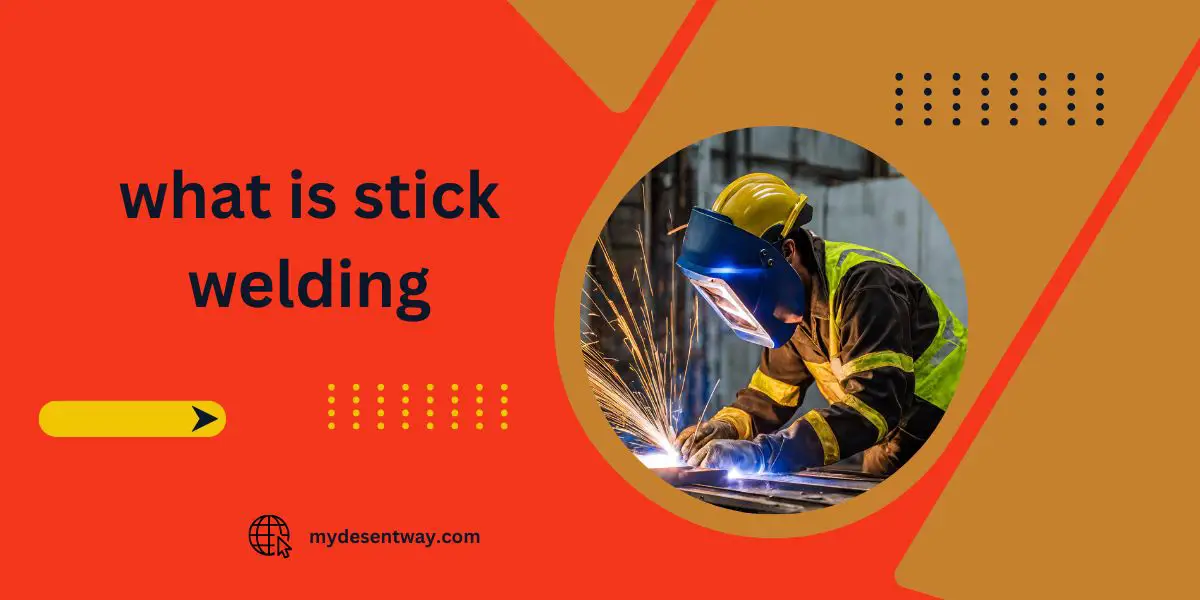
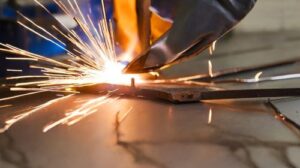
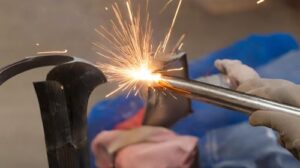
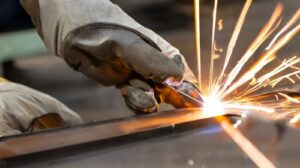
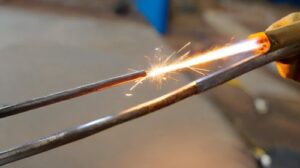

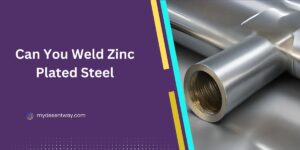
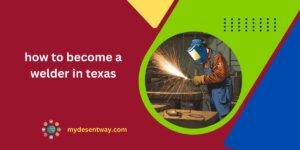
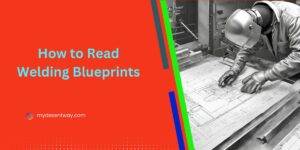


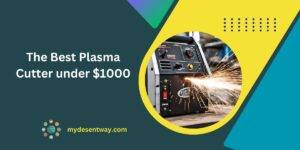

9 thoughts on “What is Stick Welding? Unveil Its Shocking Power!”